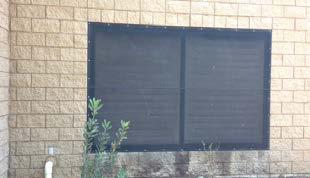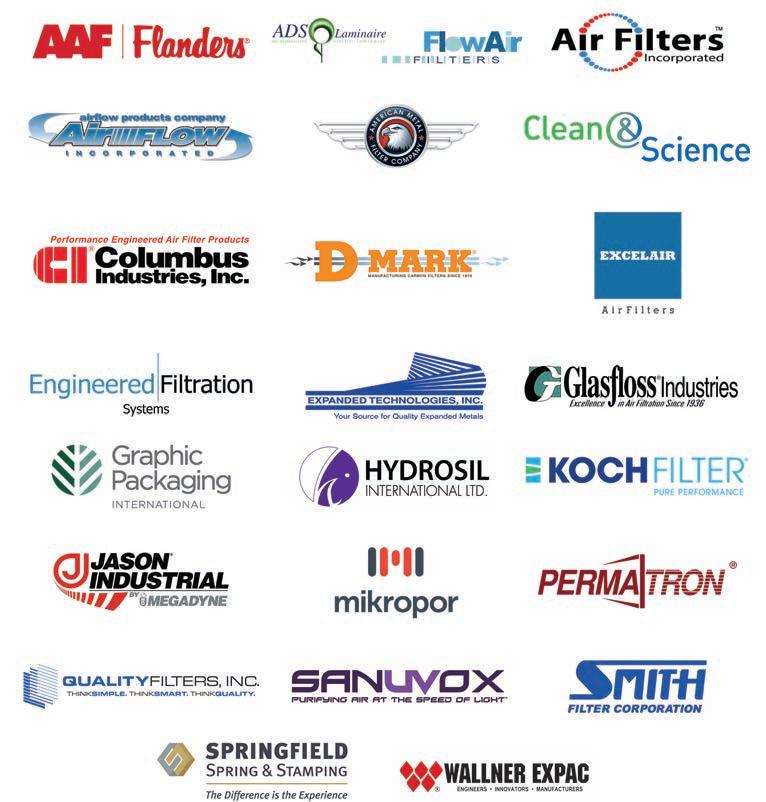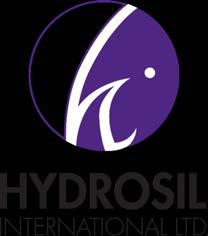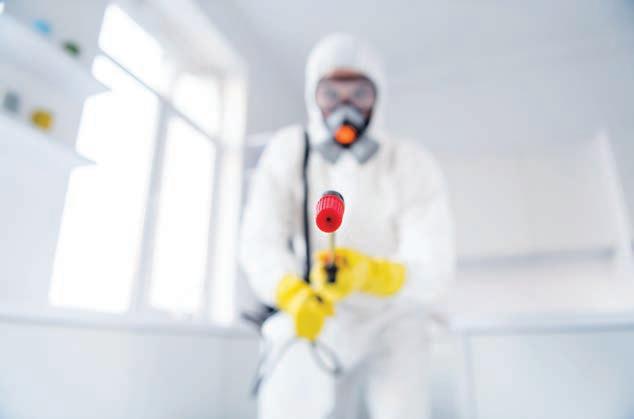
12 minute read
COVID-19 FAQ
COVID-19 (Corona Virus) and Air Filtration Frequently Asked Questions (FAQs)
by Professor Jeffrey Siegel, Department of Civil & Mineral Engineering University of Toronto
Advertisement
What you need to know about keeping you and your building safe
As we all socially distance and stay home amid the COVID-19 pandemic, some may be asking themselves what else can they do to ‘flatten the curve.’ While hand-washing and staying home remain the most effective means of limiting the spread of the virus, there is conflicting information surfacing about the role and efficacy of air-filters.
“It is important for people to understand how air-filtration systems are supposed to work,” says Jeffrey Siegel, a professor in the Department of Civil & Mineral Engineering at the University of Toronto and an expert in indoor air quality. “Some may be frightened with the situation we are all facing right now, but the best way to protect ourselves, our families, and our communities is with evidencebased information.”
Frequently asked questions
Can building air filtration protect me from getting COVID-19? Filtration in building heating, ventilation, and air conditioning (HVAC) systems can be a part of an overall risk mitigation approach but is not generally regarded as a solution by itself. There is no direct scientific evidence of benefit, but some reduced exposure can reasonably be inferred based on the ability of some filters to remove particles that contain a SARS-CoV-2 virus. In order for filters to have any impact on infectious disease transmission, transmission has to occur through the airborne route, filters have to be properly installed and maintained in appropriate systems to treat recirculated air, and filters have to be appropriately designed for the building in which they are used. More importantly, in most buildings and in most situations, filters may be considerably less effective than other infection control measures including social distancing, isolation of known cases, and hand-washing.
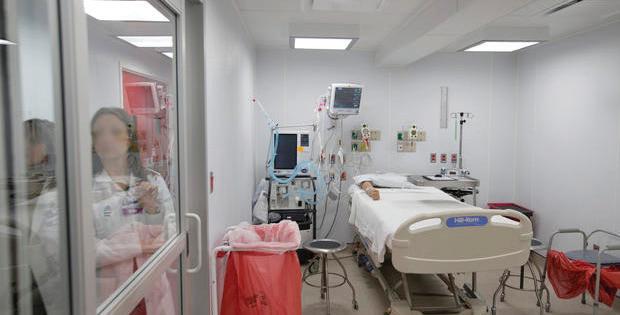
What filter should I use to protect those in my building from COVID-19? There is no obvious answer to this question, given unknowns about the nature of SARS-CoV-2 containing particles and droplets, as well as the broader issues raised above. We do know that low-efficiency filters (e.g., less than MERV 8 according to ASHRAE Standard 52.2 or less than ePM2.5 20% according to ISO 16890-1:2016) are very unlikely to make a difference. Properly installed higher efficiency filters can remove particles of a relevant size depending on their installed capture efficiency, but current information does not allow for specific recommendations.
Why shouldn’t I just use the highest-efficiency filter that I can find? High-efficiency filters may be appropriate for your building, but they can also be counterproductive. A high-efficiency filter may have a high initial pressure drop and/or load with dust and particles very quickly, thus requiring frequent filter changes. A high-pressure drop filter (either because it is that way when it is new or because it loads quickly) can also cause more air to bypass the filter if it is not properly installed and well-sealed. Depending on the design of your system, a high-pressure drop filter can also diminish the amount of air supplied into the environment, making the filter less effective as well as causing other problems with other parts of the HVAC system. Most importantly, in many residential and some light commercial systems, the fan in the system does not run very often and the efficiency of the filter may not be as important as it could be. I know that hospitals have good filtration, why don’t we all just use systems like these? Hospitals (and many healthcare facilities) have specially designed mechanical systems that can accommodate the levels of filtration that they need. They often rely on other systems and control strategies (e.g., UV lamps, humidity control, airflow management) to maximize the benefit from filtration. Most importantly, they have dedicated staff who operate and maintain this equipment so that it provides maximal benefit.
What about ultraviolet (UV) lamps, do they work? A properly designed and maintained UV system, often in concert with filtration, humidity control, and airflow management, has been shown to reduce infections from other viruses. The details of the system are very important (e.g., design of fixtures, lamp type, lamp placement airflow amount and mixing, etc.). Simply adding UV to an existing system without consideration of these factors has not been demonstrated to have a benefit.
What about ionizers, ozone generators, plasma, and other air cleaning technologies? None of these technologies have been proven to reduce infection in real buildings, even if they have promise based on tests in a laboratory or idealized setting. Some of them have substantial concerns about secondary issues (such as ozone production).
What about portable air cleaners? Similar to building filtration, here is no direct clinical evidence of the benefit of portable air cleaners for reducing infectious disease risk, but some benefit can be reasonably inferred for appropriately sized (e.g., their removal rate is appropriate for the room), maintained, and operated portable HEPA filters. As with building filtration, the details are important (e.g., efficiency and airflow rate of the air cleaner, sizing and placement within the space, maintenance and filter change, nature of space that is being cleaned) and appropriate portable filtration is only likely to be effective in concert with other measures.
Doesn’t filtration require that the droplets that cause COVID-19 be airborne? I have heard that it is large droplets. Yes, most public health guidance suggests that COVID-19 transmission is predominantly associated with large droplets. This is why air filtration is only a small part of a solution as it does not generally address transmission from surface contact or from close contact between individuals. However, the distinction between droplet and airborne is particle size. We know that a) droplets can stay airborne for long periods of time (e.g., hours under some conditions) b) droplets change in size based on a number of factors including their composition and the relative humidity of the air around them (low relative humidity will generally cause droplets and particles to become smaller). Further, DNA and RNA from other viruses that are generally associated with droplets have been found on used filters.
COVID-19 (Coronavirus) Resources for the Air Filtration Industry
ASHRAE COVID-19 Resource Page
https://tinyurl.com/CovidASHRAE This page contains information accessible to the public including ASHRAE Standards and Guidelines, technical resources, handbooks and conference presentations.
ASHRAE Position Document on Airborne Infectious Diseases(updated February 2020) https://tinyurl.com/ASHRAE-AID
Government Response to Coronavirus, COVID-19
https://www.usa.gov/coronavirus Learn more about what the U.S. government is doing in response to the virus.
Guidance Document from OSHA
https://www.osha.gov/Publications/OSHA3990.pdf General practices to help prevent worker exposure and information to deal with worker safety issues.
CDC Coronavirus Disease 2019 Website
https://www.cdc.gov/coronavirus/2019-ncov/index.html Safety tips, situation updates, disease background.
SBA Disaster Assistance in Response to the Coronavirus
https://www.sba.gov/funding-programs/disaster-assistance/coronavirus-covid-19 The U.S. Small Business Administration is offering designated states and territories low-interest federal disaster loans for working capital to small businesses suffering substantial economic injury as a result of the Coronavirus (COVID-19).
What precautions should I take when changing filters? In general, it is wise to assume that filters have active microbiological material on them. Whether this represents an important infectious disease risk from viruses is not known, but the precautionary principle would suggest that care should be taken. This becomes particularly important in any building (including a home) where there are known or likely cases of any infectious disease including COVID-19 and also extends to portable air cleaner filters and vehicle cabin air filters. Filters should be changed with the system turned off, while wearing gloves, with respiratory protection if available, outdoors if possible, and disposed of in a sealed bag. ■
Where can I go to get more information
The best place for all COVID-19 information is your local, regional, and national health authorities. More information specific to building systems can be found here:
• ASHRAE: https://tinyurl.com/CovidASHRAE • REHVA: https://tinyurl.com/CovidREHVA
Need guidance on getting back to work and preparing your buildings for re-entry amid COVID-19?
Get help from BOMA:
• https://tinyurl.com/re-entry
Continued from page 3
James Suttle
TLC Refrigeration and Air Conditioning
Mesa, Arizona Manufacturer
David Heacock
FilterBuy, Inc. Talladega, Alabama
Meredith C. Rogerson
Pamlico Air Washington, DC
Michael Klump
Purafil, Inc. Doraville, Georgia
Jeremy Idlebird
Sentry Air Systems Cypress, Texas
Marlene Chaparro
Spifil, Inc.
Houston, Texas Supplemental
Maureen Jerolis, CAFS
Service Side Air, LLC (CT)
Mystic, Connecticut Association Partner
Sukumaran Pradeep
Muscat Oman Professional Individual
Atef A. Alshaikh
Jeddah Saudi Arabia
Pablo Bedoya
Lima Peru
Christopher Ian Lakey
Bend, Oregon ■
SO ENERGY EFFICIENT, THEY COULD BE FREE!
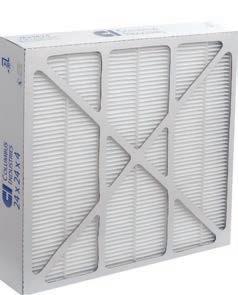

Discover long-term savings when you use CI filters
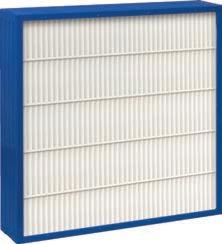

What if you could lower costs and reduce energy consumption with a single product? With performance engineered filtration products from Columbus Industries, you can.
CI filters are ideal for these applications:
commercial and industrial facilities; government and educational facilities; paint booth/finishing; hospitals, research labs and pharmaceuticals; airports; electrical manufacturing; and power generators.

Lower operating costs can be achieved by using filters that combine lower initial pressure and higher dust holding capacity. The long-term energy savings will more than cover the cost of the filter.
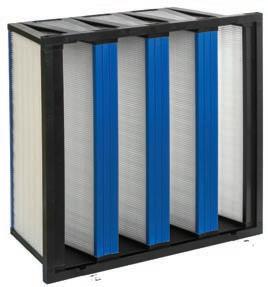
To request a free energy calculator, visit www.colind.com, click on CONTACT US and type your request in the filtration needs comment section.
PRESSURE DROP LOADING CURVE
E n e r g y S a v i n g s

DUST LOADING
2938 State Route 752 • P.O. Box 257 • Ashville, Ohio 43103-0257 Phone: 740.983.2552 • Fax: 740.983.4622 www.colind.com • Email: ci@colind.com
Continued from page 2
ASHRAE’s Epidemic Task Force has posted statements on their website including the following found under Mechanical Air Filters:
“The fraction of particles removed from air passing through a filter is termed 'filter efficiency' and is provided by the Minimum Efficiency Reporting
Value (MERV) under standard conditions. • MERV ranges from 1 to 16; higher MERV = higher efficiency • MERV ≥13 (or ISO equivalent) are efficient at capturing airborne viruses • MERV 14 (or ISO equivalent) filters are preferred • High efficiency particulate air (HEPA) filters are more efficient than MERV 16 filters.” These first two events set the stage for a rapid transition in demand to higher MERV filters from MERV 13 up through HEPA. But then….
Third, products such as face masks and respirator filters along with other critical products have been suggested in the CDC guidelines as critical for businesses to re-open. Unfortunately, the DPAS rating for HVAC filters is below that for these products mentioned. The charged melt-blown media which is used in many bag and rigid box filters as well as mini-pleat compact filters also provides the efficiency layer for many if not most of the face masks being rushed into production over these past few months. Even the carded and spun bonded media which we use in lower efficiency products and as backing materials for higher efficiency layers are also being used for the inner and outer layers for face masks.
So, while the increased demand is rapidly pulling down inventories of higher efficiency filtration products, this third event has diverted needed capacity for filter media production to products other than HVAC filters. While these first three events can be classified as actual observations, there is a fourth event which I have to preface as a projection.
Fourth, as industry comes back on stream, there will be an inevitable spike in demand for HVAC filters which will occur sometime around mid-June. Up until now we have experienced at least a trickle of products coming down the pipeline, however what I see coming is much more serious.
Already I have spoken to distributors who have indicated that they are returning lower MERV filters and ordering higher MERV filters for replacement. In other incidences, media producers have canceled orders which were already in queue.
There are actions that we can take such as ensuring that adequate pre-filters are in place in order to extend the life of the final filter, but this will barely scratch the surface of the problem. And while our industry has proven over the years that we are capable doing what is necessary to meet situations of critical demand, absent the supply of product from high end media producers, our hands may be tied.
As Michelle mentions in her commentary, we were contacted last month by the National Renewable Energy Laboratory (NREL) and Department of Defense (DOD) to discuss industrial base issues associated with materials needed to produce both masks and MERV-13 and higher HVAC filters. The DOD is ultimately responsible for the nation’s logistics for addressing COVID-19 supply chain issues. The recent survey sent out to our Distributor members was the first step in an accumulation of data by NAFA to support our industry’s concerns. We will continue to push awareness of our situation and will be drafting more of you to assist in making our case. See survey results in this issue.
What NAFA members have gained from our certification programs, continuing education and networking have paid off these past few months. While others have debated topics such as how many seconds the SARS-CoV2 can remain viable when airborne or how far the virus might be capable of traveling, many of you have found it necessary to jump in to assist customers such as hospitals with immediate solutions such as quickly providing temporary negative pressure isolation rooms. When you are a 60-bed hospital with 23 COVID-19 patients, you don’t have the luxury of debating theory. Since the start of this pandemic, we have all been made aware of the importance of CAFS and NCT training in providing the best practical solutions to ever changing applications and requirements but also to insure that technicians are trained to work safely in potentially hazardous situations. I am more convinced than ever that critical facilities such as hospitals and medical care facilities should at a minimum require that anyone recommending, or servicing filters have a CAFS certification and we will continue to work toward this end.
Communication has become more important than ever and I hope that each of you will take the time to let us know of your experiences or just how you are doing. Again, I thank you for allowing me to serve as your President. And if you happen to run into Jim Rosenthal please let him know that I will see him and all of you in Clearwater. ■
Stay safe,
Tom Justice NAFA President





